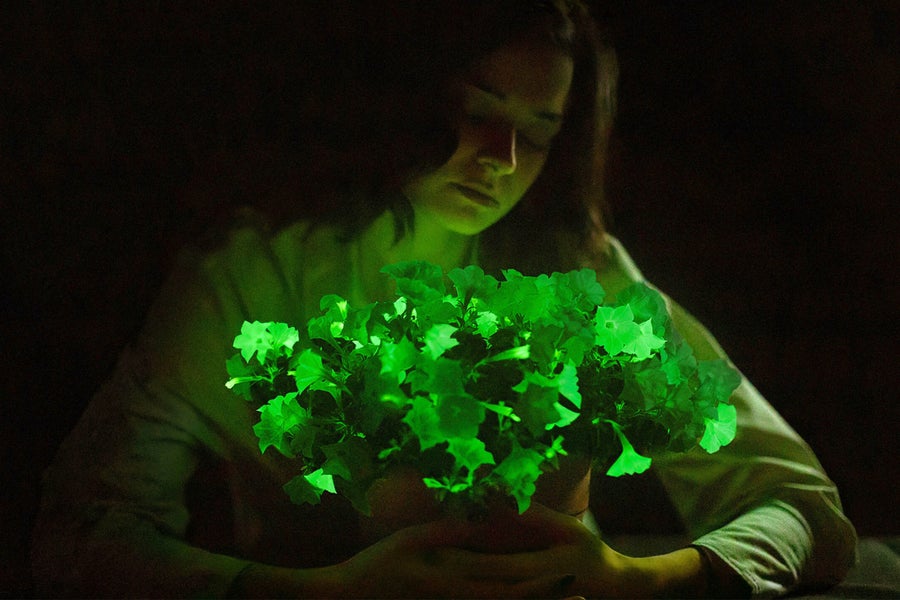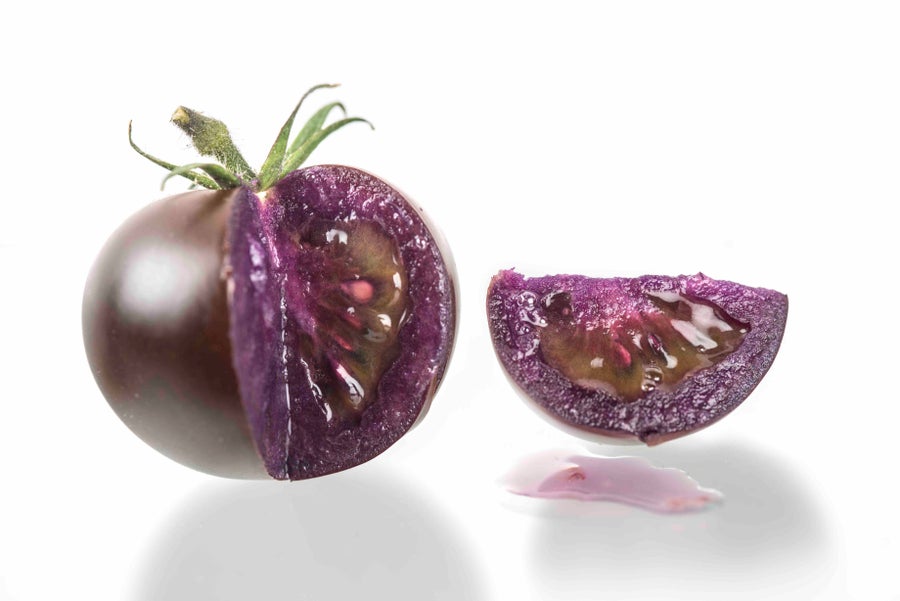Consumers in the United States can now pre-order a genetically engineered plant for their home or garden that glows continuously. At a base cost of US$29.00, residents of the 48 contiguous states can get a petunia (Petunia hybrida) with flowers that look white during the day; but, in the dark, the plant glows a faint green. Biotechnology firm Light Bio in Sun Valley, Idaho, will begin shipping a batch of 50,000 firefly petunias in April.
Researchers contacted by Nature seem enamoured by them. This is a “groundbreaking event” — to have made a plant that can bioluminesce brightly enough to be seen with the naked eye and sold to plant lovers, says Diego Orzáez, a plant biologist at the Institute of Plant Molecular and Cellular Biology in Valencia, Spain. “Being a European, I have envy that consumers in the United States can have their hands on these plants.”
Growing and glowing
On supporting science journalism
If you’re enjoying this article, consider supporting our award-winning journalism by subscribing. By purchasing a subscription you are helping to ensure the future of impactful stories about the discoveries and ideas shaping our world today.
Keith Wood, chief executive and co-founder of Light Bio, has been working on bioluminescent plants — which emit light through chemical reactions inside their cells — since the 1980s. In 1986, he and his colleagues reported making the first such plant, a type of tobacco (Nicotiana tabacum) into which they inserted the luciferase gene from fireflies (Photinus pyralis). At the time, the goal was to learn about the basics of gene expression, and the tool is still used by plant biologists today. Researchers can engineer plants so that when a particular gene of interest is activated, the luciferase gene is too, and the plant will light up.
Because this was “a cool thing,” Wood says, start-up companies then tried to make the plants for decorative purposes. But the plants glowed only faintly and needed special food to fuel their light-emitting chemical reaction.

The firefly petunia glows brightly and doesn’t need special food thanks to a group of genes from the bioluminescent mushroom Neonothopanus nambi. The fungus feeds its light-emitting reaction with the molecule caffeic acid, which terrestrial plants also happen to make. By inserting the mushroom genes into the petunia, researchers made it possible for the plant to produce enzymes that can convert caffeic acid into the light-emitting molecule luciferin and then recycle it back into caffeic acid — enabling sustained bioluminescence. Wood co-founded Light Bio with two of the researchers behind this work, Karen Sarkisyan, a synthetic biologist at the MRC Laboratory of Medical Sciences in London, and Ilia Yampolsky, a biomolecular chemist at the Pirogov Russian National Research Medical University in Moscow.
Unlike fluorescence, which requires special light bulbs, the petunia’s bioluminescence happens without needing any particular type of light or special food. That sets the plant apart from other glowing creatures on the market, the GloFish. These aquarium pets, available in many species and colours — including electric green tetras — fluoresce under ultraviolet light.
“If you treat the plant really well, if it gets enough sunlight and it’s healthy, it will glow brighter,” Sarkisyan says. But he wants to manage people’s expectations: it’s not bright enough to keep you awake at night. It’s a gentle green glow similar to the light of the full Moon.
Genetic engineering in a different light
The plant was approved by the US Department of Agriculture in September. Sarkisyan says that Light Bio chose petunias because they’re used widely as ornamental plants in the United States. It also chose them to minimize risk. This type of petunia is not native to North America, and is not considered an invasive species. So the chances of the modified genes spreading into native plants and disrupting ecosystems should be minimal.
Scientists contacted by Nature didn’t see any safety risks. “I cannot imagine any reason why this should be a concern,” Orzáez says.
“People’s reactions to genetically modified plants are complicated,” says Steven Burgess, a plant biologist at the University of Illinois Urbana–Champaign. Many concerns centre around who owns a technology and who benefits from it. A glowing houseplant is different from plants used by the agriculture industry, in which one company owns the seeds, he says.
Burgess compares the glowing petunia with another timely product. The purple tomato (Solanum lycopersicum), for which seeds went on sale earlier this month in the United States, is the first genetically modified food product to be marketed directly to gardeners. Researchers inserted genes from a snapdragon plant (Antirrhinum majus) into the tomato to achieve its colour and high levels of anthocyanins, which are antioxidants.

When asked whether Light Bio is worried about plant lovers sharing cuttings of the petunia with friends, Sarkisyan says that although the firm owns patents for the technology, it doesn’t plan to crack down aggressively on the behaviour. “The most positive way of dealing with it is to come up with new, better products,” he says. This year, the company shared that it has succeeded at increasing the brightness of the bioluminescence in its plants by incorporating genes from other mushroom species and using directed evolution to make them function better in the plants.
Orzáez is excited about the research potential of the technology behind the petunias. He is currently developing plants that use the mushroom luciferase system to communicate when they are stressed or infected by a virus. He imagines that future farmers might get an early heads-up about problems with their crops from satellites or drones flying at night.
“Genetic engineering can be used for the good of humanity,” Orzáez says, acknowledging that many people are scared of it. “Having positive examples of genetic engineering, something people can touch and bring home” — such as the firefly petunia — could help people to see such modifications in a different light, he says.
This article is reproduced with permission and was first published on February 9, 2024.























































